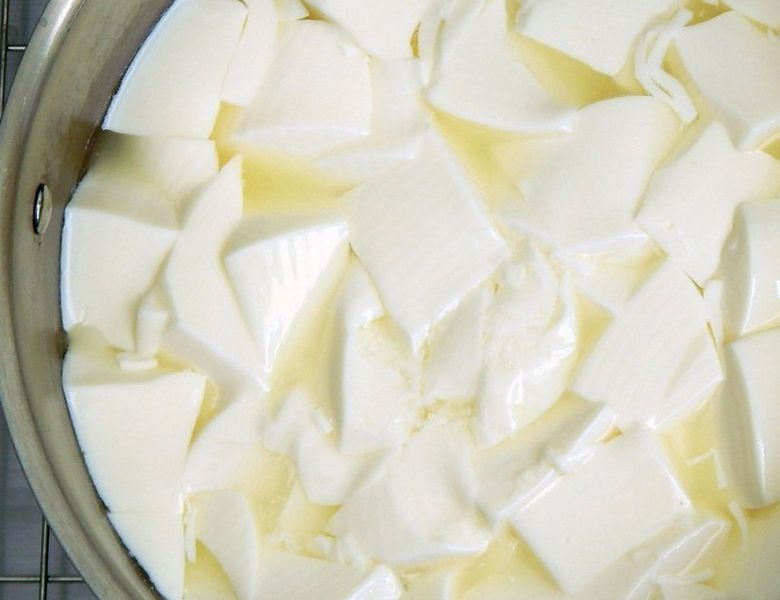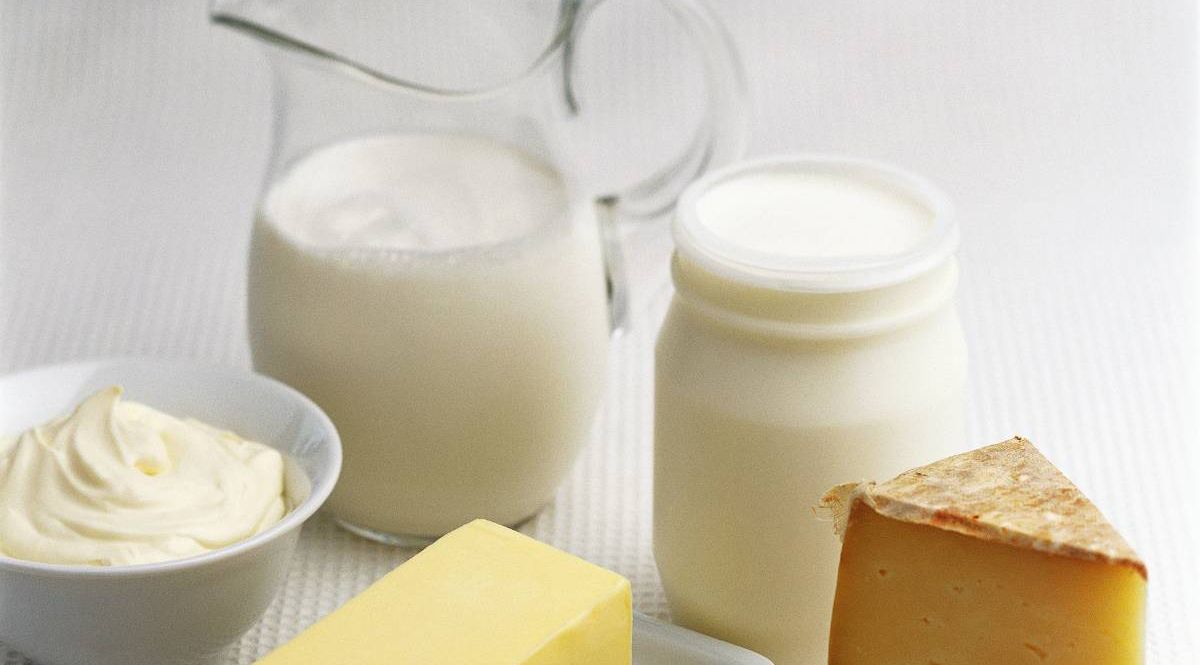- آتاماد
- Cheese and coagulants
Cheese and coagulants

- | user2 |
- Viewer: 5702
Cheese and coagulants , The first essential biochemical process during cheesemaking is the conversion of liquid milk into a soft gel,
usually denoted as curd. This process was coincidentally detected thousands of years ago, and since then it has been advantageous to transfer the very perishable substrate into a more stable form, cheese. Rennet and coagulants are preparations of proteolytic enzymes, some of which have been used in cheese making for thousands of years, and they seem to be the oldest known application of enzymes. The earliest indication of cheese making descends from cave paintings around 5000 bc. Rennet has been used for clotting of milk and cheese making for thousands of years and became a commercial product in 1874. Lack of stomachs for rennet production led to the development of microbial milk-clotting enzymes in the 1960s and, the next generation of coagulants, FPC was introduced in 1990,
With the beginning of industrialized food manufacture of dried stomachs or, later in the 20th century, concentrated or dried extracts thereof (i.e., liquid or powdered rennet) have been made available to cheese makers by specialized enterprises to reduce production risks and to ensure better hygienic conditions during manufacture.
Coagulation of milk by rennet is widely exploited as the first step in the production of many different cheese varieties. Rennet coagulation has several important advantages over acid coagulation; these include faster coagulation (i.e., minutes) compared to the slower rate of acid development (i.e., hours) required by starter cultures to coagulate milk for cheeses such as Cottage cheese (in contrast, milk coagulates very rapidly when acid is added directly). Renneted milk gels also undergo much more syneresis than do acid milk gels, which helps to produce cheeses with lower moisture levels. In most cheeses, starter cultures are added to reduce the pH, which helps to improve keeping quality (i.e., less perishable), as well as to alter textural attributes and to generate flavor compounds during ripening.
The original rennet preparation is, by definition, an extract of ruminant abomasum (Andren, 1998); it is commonly called animal rennet. This definition is now generally accepted, and it is agreed that the name ‘rennet’ should be reserved for enzyme preparations from ruminant stomachs, whereas other milk-clotting enzymes should be named ‘coagulants’, The common group names are microbial and vegetal coagulants, respectively. It is also generally accepted that chymosin produced by a genetically modified organism (GMO) is called ‘fermentation-produced chymosin’ (FPC).
The term rennet is usually dedicated to a functional enzyme preparation that is able to induce curd formation. Natural rennet that originates from ruminants is a mixture of different molecular species and genetic variants of chymosin, an aspartic protease
Generally, substitutes for animal rennets should show similar activity patterns at defined pH and temperature. They should preferably have a high ratio of clotting activity (specificity toward k-casein) to general proteolytic activity, and they should exhibit a thermolability that is comparable to that of natural rennet.
Microbial-derived rennet substitutes are more or less purified proteases secreted by different fungal species (e.g., Rhizomucor miehei) that act on milk in a similar way as natural rennet. Plant extracts are a further source of potentially available rennet substitutes that are used in traditional dairy processing in some countries.
Animal rennet and coagulants
Within the group of products of animal origin, calf rennet is regarded as the ideal enzyme product for cheese making due to its high content of chymosin, nature’s own enzyme for coagulating bovine milk. In the abomasum and extracts from its tissues, the proportion varies between the two enzymes, chymosin and pepsin, depending on the age of the animal and the type of feed.
The traditional product, calf rennet, has until recently been the reference product against which alternative products are measured. Several niche products exist, of these lamb/ovine and kid caprine/caprine rennet are very similar to calf/adult bovine rennet, but they are best suited for clotting milk of their own species
Besides chymosin, animal rennets contain pepsin, another aspartic proteinase, in an amount that depends on the diet of the animal and on the age
Microbial coagulants
All the well-known microbial coagulants used for cheese making are of fungal origin.Most of the bacterial proteases described as milk-clotting enzymes have been found to be unsuitable, mainly because they have too high a proteolytic activity. Of the two microbial coagulants used for cheesemaking (Table 3.1), Rhizomucor miehei is predominant. It exists in four types, all significantly more proteolytic than chymosin.
Microbial-derived coagulants refer to proteolytic enzymes produced from usually nongenetically modified microorganisms, and which are able to induce clotting and gelation of milk. Their effect is therefore phenomenologically similar to the effect of chymosin. In many cases, the respective proteases are, however, less specific than chymosin, and hence the ratio of clotting activity to general proteolytic activity is lower.
Fermentation-produced chymosin
FPC is chymosin produced by fermentation of a GMO. The products contain chymosin identical to the animal source, meaning that they have the same amino acid sequence as chymosin from the corresponding animal stomach, but it is just produced by The Production, Action and Application of Rennet and Coagulants more efficient means. FPC products have been on the market since 1990. The main FPC, which contains bovine chymosin B, is today considered to be the ideal milk-clotting enzyme against which all other milk-clotting enzymes are measured. FPC (camelus) has been found to be an even more efficient coagulant for bovine milk than FPC (bovine), and is among others characterised by its very high specificity against caseins, which leads to high cheese yields without creating any bitterness.
Vegetable coagulants
Many enzymes from plants have been found to coagulate milk (Garg & Johri, 1994), but one extracted from Cynara cardunculus (L.) cardoon (Heimgartner et al., 1990), seems especially suitable. Since ancient times, the flowers of C. cardunculus have been used in artisan cheesemaking, especially in Portugal, where it is considered a superior for cheeses like Serra and Serpa. Cardoon coagulants are not widely used, but they are produced and used locally in some Mediterranean countries.
Molecular aspects of the enzymes in rennet and coagulants
The molecular aspects of the milk-clotting enzymes present in rennet and coagulants are important for the understanding of the similarities and differences between the products. All enzymes primarily used formaking cheese belong to the family of aspartic proteases,which is characterised by having the same catalytic mechanism, with two aspartic acid residues in the catalytic site.
Analysis of coagulants
The need to be able to analyse rennet and coagulants has increased since the 1970s, due to the wide range of products and mixtures of products on the market. Although all enzymes used for cheesemaking have similar milk-clotting properties and belong to the same group of aspartic proteinases, they exhibit many small but important differences for the application. In fact, the great similarity causes most of the difficulties when analysing milk-clotting enzymes. The different rennets/coagulants have different values for cheesemaking, and it is important to analyse the products for financial and quality reasons. The most important parameters of rennet and coagulants to be analysed are strength (enzyme activity), enzyme composition, identity and purity. Soxhlet units are defined as the volume of milk, which one volume of enzyme preparation is able to clot in 40 min at 35◦C. The strength is expressed as ratios, e.g. 1:15 000 (which means that 1 mL of rennet is able to clot 15 000 mL of milk). This unit is easy for the cheesemaker to understand, but it depends very much on the pH and the quality of the milk. The strength in Soxhlet units, which is occasionally still used, exist in many different variants and should, therefore, only be used as a guideline for the approximate strength.
Subsequently, the Berridge units or rennin units (RU) have been used to a great extent. One RU is defined as the activity which is able to clot 10mL of standardisedmilk in 100 s at 30◦C. Today, the strength is mainly analysed by the international standard methods, which are developed and published jointly by the International Organisation for Standardisation (ISO) and the International Dairy Federation (IDF).
There are two traditional methods for measuring milk-clotting activity, which is defined as the capability for specific k-casein hydrolysis. The current standard methods published by the International Dairy Federation (ISO/IDF, 2002, 2006, 2007) are based on the method of Sommer and Matsen (1935), using visual observation of the appearance of flocs of renneted milk on the wall of a rotating glass flask. Experienced users are able to determine clotting time with relatively high precision once the following parameters have been specified: concentration of the reconstituted milk used for the test, characteristics (e.g., whey protein denaturation) of the milk powder used for reconstitution, ratio of milk volume to flask nominal volume, temperature, milk pH, rotation angle, and rotational speed.
The second method for clotting activity determination that is still used in traditional cheesemaking is the Soxhlet method (Harboe and Budtz, 1999): the clotting strength in Soxhlet units refers to the volume of raw milk that can be clotted by one volume unit of enzyme at 35°C within 40 min.
There are a number of selection criteria that determine the type of coagulating enzyme that is used for the processing of milk into cheese. In the European Union, coagulants are considered as processing aids and there is no need to specify the enzyme type on product labels. What is, however, declared frequently and probably selected for this specific purpose are microbial-derived coagulants that are acceptable for vegetarians. On the other hand, there are regulations for a number of protected designations of origin (PDO) cheeses that dictate the use of animal rennet.
Due to the reduced micelle diameter, the caseinomacropeptide release is accompanied by a decrease of milk viscosity of approximately 5%; the viscosity minimum is at approximately 60%–70% k-casein hydrolysis
Catalyzed by the coagulant, a fast hydrolysis of the Phe105- Met106 peptide bond in the k-casein molecule causes the destabilization of the casein micelles, their coagulation, and subsequent gel formation. Even if the coagulant is characterized by a high ratio of specific to general proteolytic activity, nonspecific breakdown of other casein fractions may be induced after prolonged action or when substrate limitation occurs. Taking natural calf rennet as reference, the following conclusions can be drawn from literature.
FPC gives comparable results when considering proteolysis as the number of small peptides that exceeds the indigenous nonprotein nitrogen content or the amount of nitrogen that is found in the whey immediately after separation from the curd. Differences in the ratio between specific and general proteolysis of recombinant chymosin from different sources have been demonstrated by Vallejo et al. (2012). In their study, a recombinant goat chymosin expressed in P. pastoris exhibited the best catalytic efficiency, the highest specific proteolytic activity, and a wider pH range of action than buffalo, bovine, or camel recombinant enzymes. Another study showed recombinant camel chymosin to have a higher catalytic efficiency on k-casein than fermentation-produced calf chymosin, but a lower activity on αS1- and β-casein
Microbial-derived coagulants from R. miehei and, especially, C. parasitica not only have higher general, nonspecific proteolytic activity on k-casein generally, but also on αS1- and β-casein
Although proteases from C. cardunculus produced a similar macropeptide fragment from k-casein, the hydrolysis of αS1- and β-casein is described as being more intense compared to calf rennet, FPC, and R. miehei proteases
Proteolysis during cheese ripening is quantitatively and qualitatively affected by the coagulant that is used for cheesemaking and has a significant impact on the sensory properties of the mature cheese with respect to flavor and texture. In this context, the two major aspects are the transfer of active coagulant into the cheese matrix and the activity of the coagulant before curd separation:
- The transfer of coagulant from milk to curd depends on technological factors (e.g., pH at draining, cooking temperature, and cheese moisture) and can be considered as being approximately 15% for semihard cheese (Bansal et al., 2007, 2009b; Sousa et al., 2001). A higher amount of coagulant in the cheese curd was linked to an accelerated degradation of αS-caseins, and a more pronounced influence on flavor and texture
- A few reports compared the progress of proteolysis in cheeses made with natural calf rennet with that in cheese made with natural kid or goat enzymes. There are, however, no clear trends, and the type of milk used for cheesemaking is apparently another contributing factor. Prieto et al. (2004) observed a lower proteolytic activity in bovine milk cheese during maturation when kid rennet was used instead of calf rennet. Studies with semihard or soft cheese made from goat or ovine milk, respectively, showed a higher intensity of proteolysis especially in the case of kid rennet (Jordan et al., 1999; O’Sullivan et al., 2005). This usually leads to a higher level of free amino acids, which contributes to the formation of a piquant flavor. For commercial animal rennets and also for lamb paste, production conditions and composition of the preparations are of additional importance
Bitterness in cheese is frequently associated with the occurrence of small hydrophobic peptides that, from the sensory point of view, can be relevant at very low concentrations. The higher proteolytic activity of microbial-derived coagulants, especially of the C. parasitica protease, may, however, be advantageous when it is positively correlated with technofunctional properties, such as meltability.
Coagulant Impact on Cheese Yield
Another important issue that is linked to the coagulant is cheese yield, expressed either as the amount of milk necessary to produce 1 kg of cheese, or as amount of cheese that is produced from 1 kg of milk. The reason for potential differences is the proteolytic activity other than necessary during gel formation, and the cleavage of αS- and β-caseins results in the separation of smaller protein subunits and peptides and their loss with the whey. As the relative differences in cheese yield that may be expected are below 1%, a careful study design and an optimum amount of repetition is necessary to deliver meaningful results.
compared different microbial-derived coagulants with natural calf rennet in laboratory-scale cheesemaking trials (7-kg vats), and reported a dry matter yield per 100 kg milk of 6.43 kg (calf rennet), 6.40 kg (coagulant from R. pusillus), 6.37 kg (R. miehei), and 6.34 kg (coagulant from C. parasitica). These authors also showed that the addition of small amounts of calcium could significantly increase the yield when microbial-derived coagulants are used; this was attributed to an improved transfer of fat from milk to cheese. compared with fermentation-produced calf chymosin, cheese yield was reduced by 0.54 and 0.74% when microbial-derived coagulants from R. miehei and R. pusillus, respectively, were used. Based on the analysis of fat and protein in the whey, comparable results for R. miehei coagulant were also reported for soft cheese
The comparison of a standard calf rennet (80% chymosin and 20% pepsin) with a R. miehei–derived clotting enzyme indicated a significantly higher yield for soft cheese (Camembert) and semihard cheese (Gouda type) that was produced at different scale levels, including a series of industrial-scale trials with 17,000-L cheese vats and Casomatic curd processing. Taking cheese yield obtained with the R. miehei coagulant as 100% reference, a yield increase between 0.50% and 1.22% was observed when calf rennet was used.
was used.
Choice of coagulant
Below is a list of considerations that it is useful to take into account when choosing
coagulants:
• Fulfilment of legal requirements, e.g. relating to purity, safety and absence of unwanted
components. If applicable, fulfilment of further requirement such as Kosher, Halal or
organic certification.
• The overall economic consequences, taking into account the cheese yield, quality and
price of the product, as well as coagulant cost and value of the whey.
• Ratio between clotting and general proteolytic activity (C/P ratio), a high ratio being desirable, since it promotes high cheese yield and protects against flavour and texture defects.
• Ability to develop high curd firmness at a given dosage in IMCU, meaning that the smallest possible dosage in IMCU can be used; generally related to a high C/P ratio.
• Stability of the coagulant at the pH and temperature of cheesemaking; in addition, stability supports good process control, and helps minimise losses of fat and curd fines in the whey due to variation in curd firmness at cutting.
• Robustness to pH and temperature. Since the pH and temperature of cheese milk is not always constant, the performance should influence as little as possible on variations. Again, this supports good process control.
• Development of normal cheese flavour and texture.
• Inactivation during whey pasteurisation; the coagulant should be essentially inactivated at 72◦C for 15 s.
• Storage stability and ease of use of the coagulant.
GET IN TOUCH
Copyright © 2023 Atamad.com All right reserved
Website design and SEO services by Seohama team – Web hosting by Sarverhama
Copyright © 2023 Atamad.com All right reserved
Website design and SEO services by Seohama team – Web hosting by Sarverhama








